Abstract
Kasuya, Morimasa (Nagoya University School of Medicine, Nagoya, Japan). Transfer of drug resistance between enteric bacteria induced in the mouse intestine. J. Bacteriol. 88:322–328. 1964.—Transfer of multiple drug resistance in the intestines of germ-free and conventional mice was studied with strains of Shigella, Escherichia, and Klebsiella. The transfer experiment was carried out under antibiotic-free conditions to eliminate the production of drug-resistant bacteria by antibiotics. All resistance factors (chloramphenicol, streptomycin, tetracycline, and sulfathiazole) were transferred with ease in the intestinal tracts of mice, when donors and recipients multiplied freely, and acquired resistance was further transferred to other sensitive enteric bacteria in the intestinal tract. Bacteria to which resistance factors were transferred showed, in most of the experiments, exactly the same level and pattern of resistance as the donors. Based on the above, a hypothesis that the same process may possibly occur in the human intestine is presented.
Full text
PDF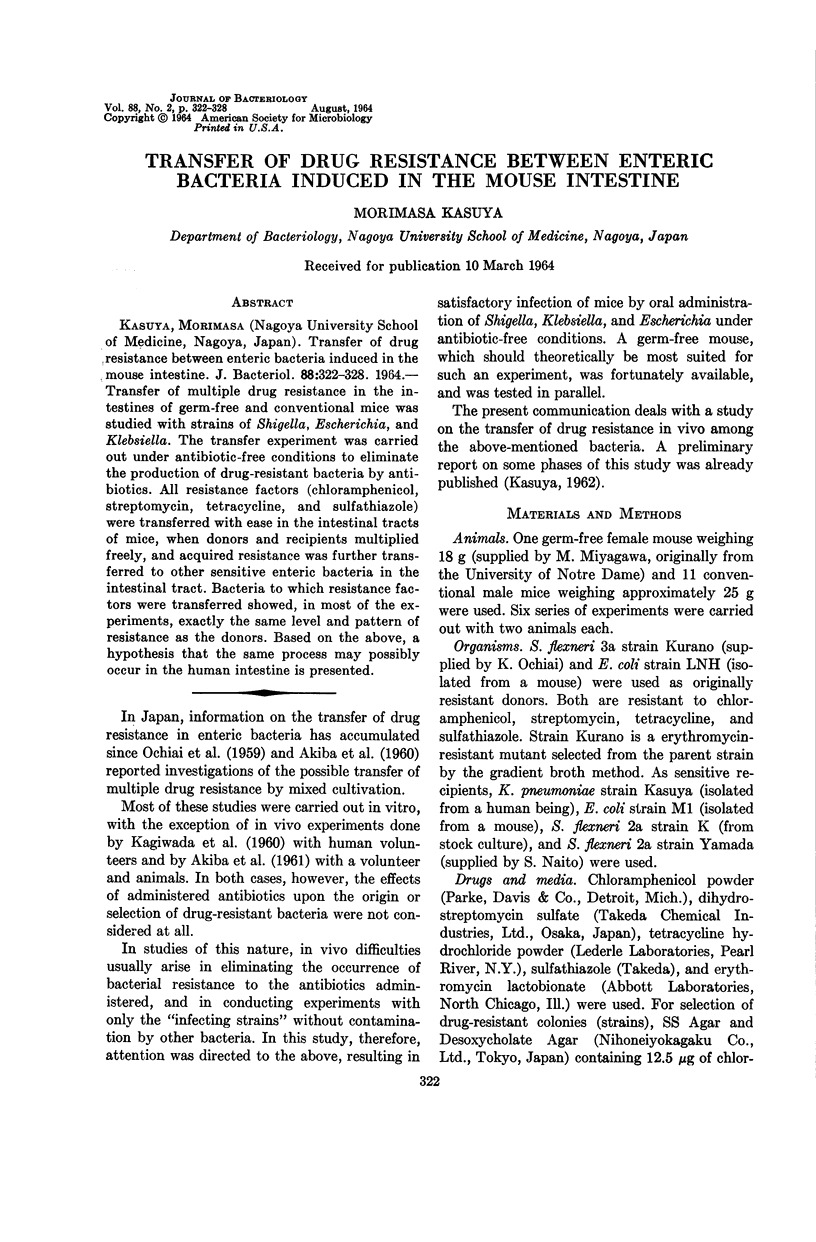
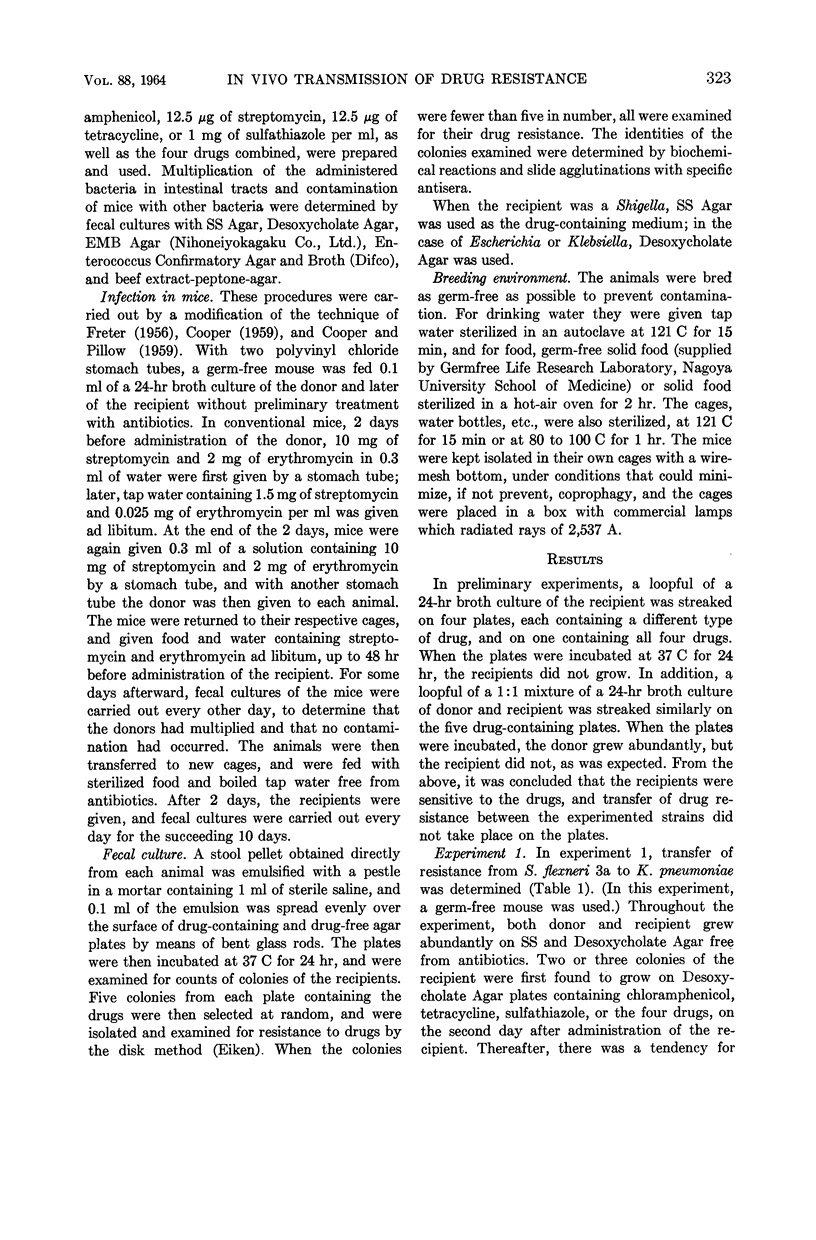
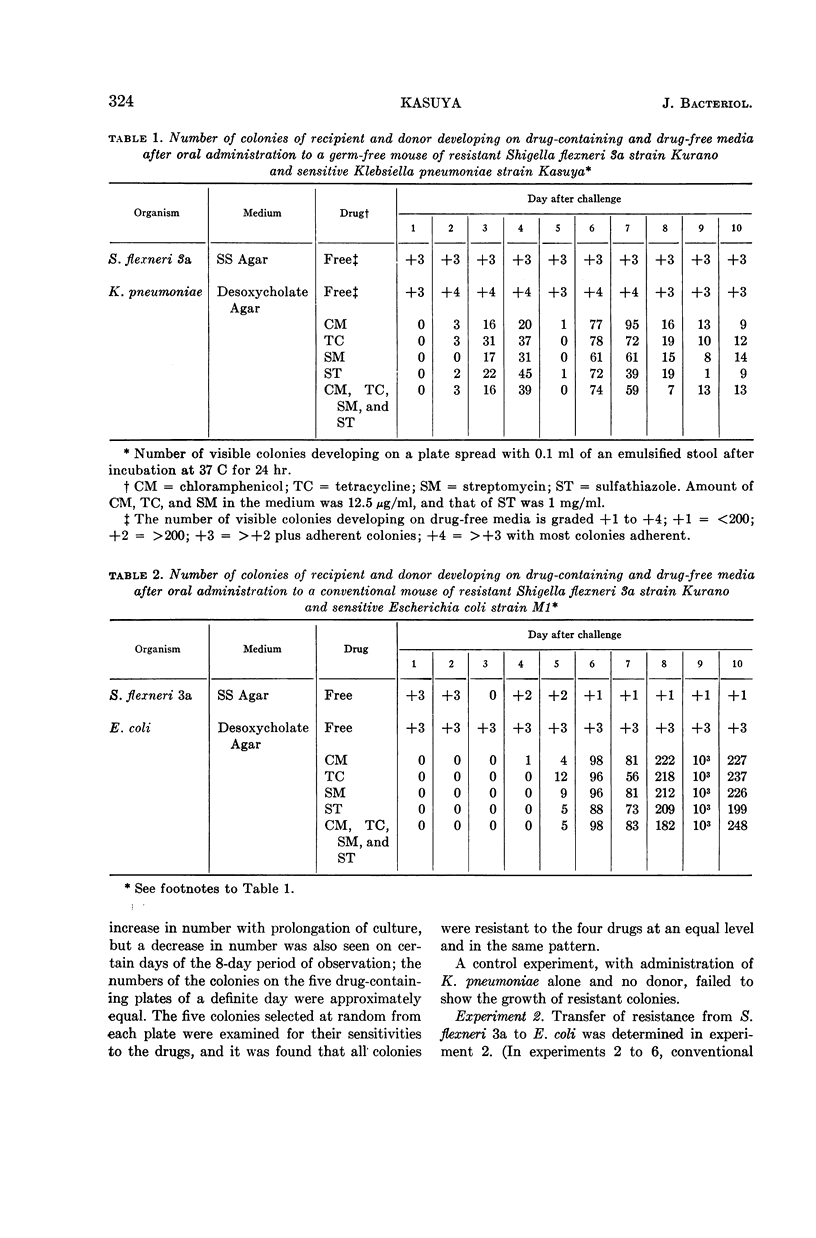
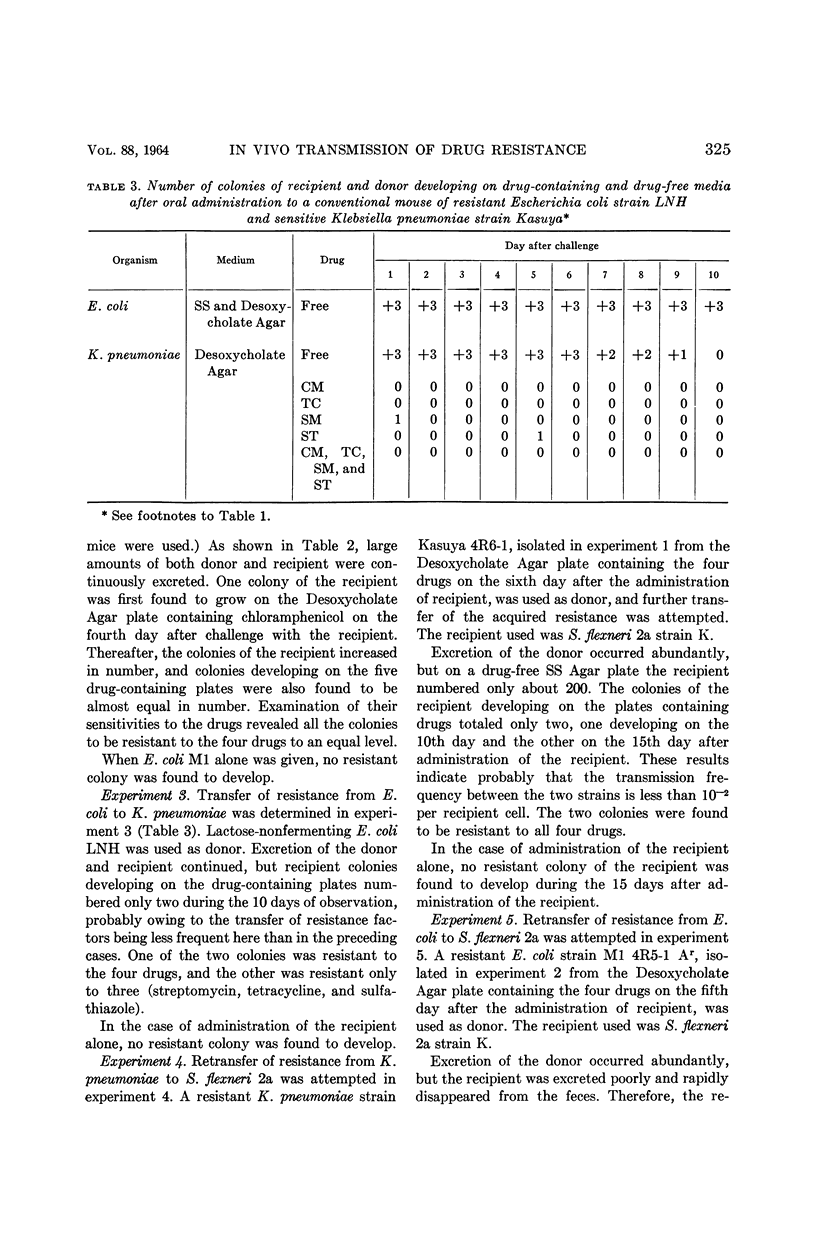
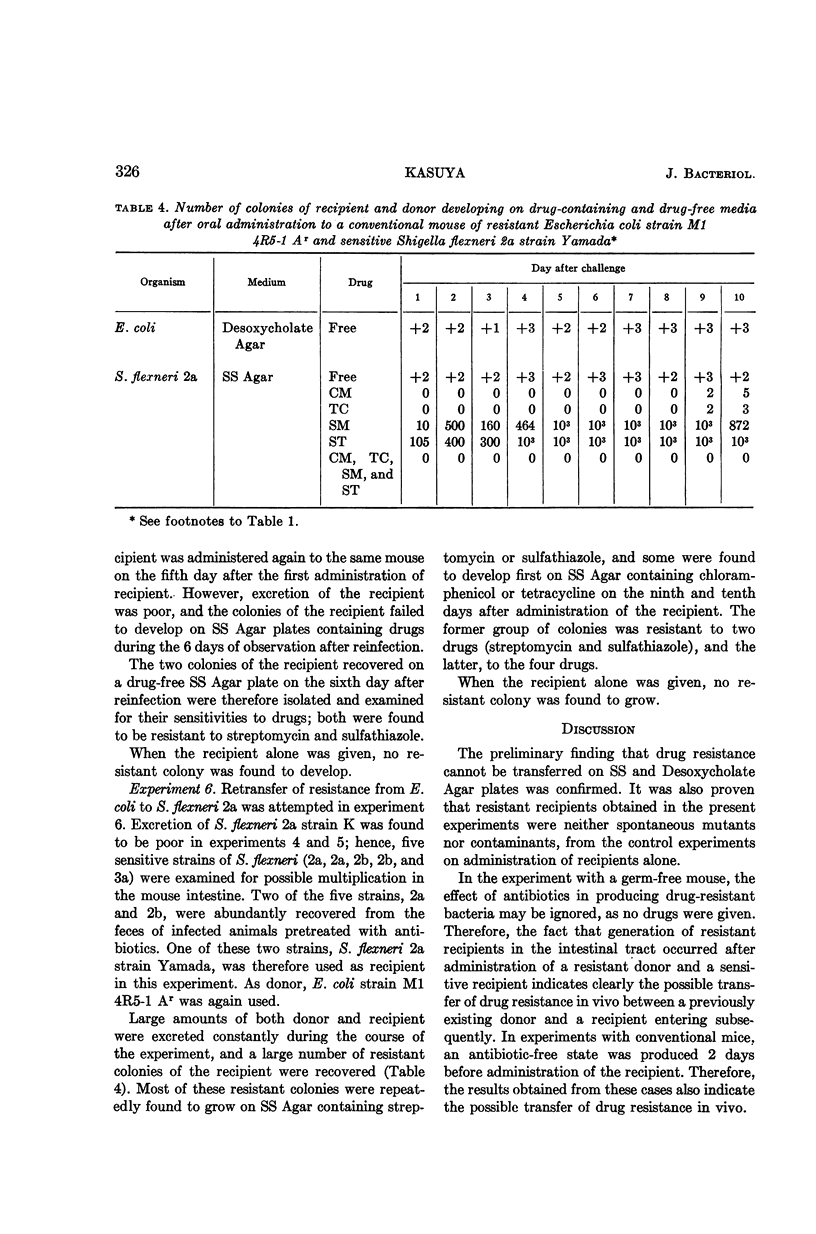
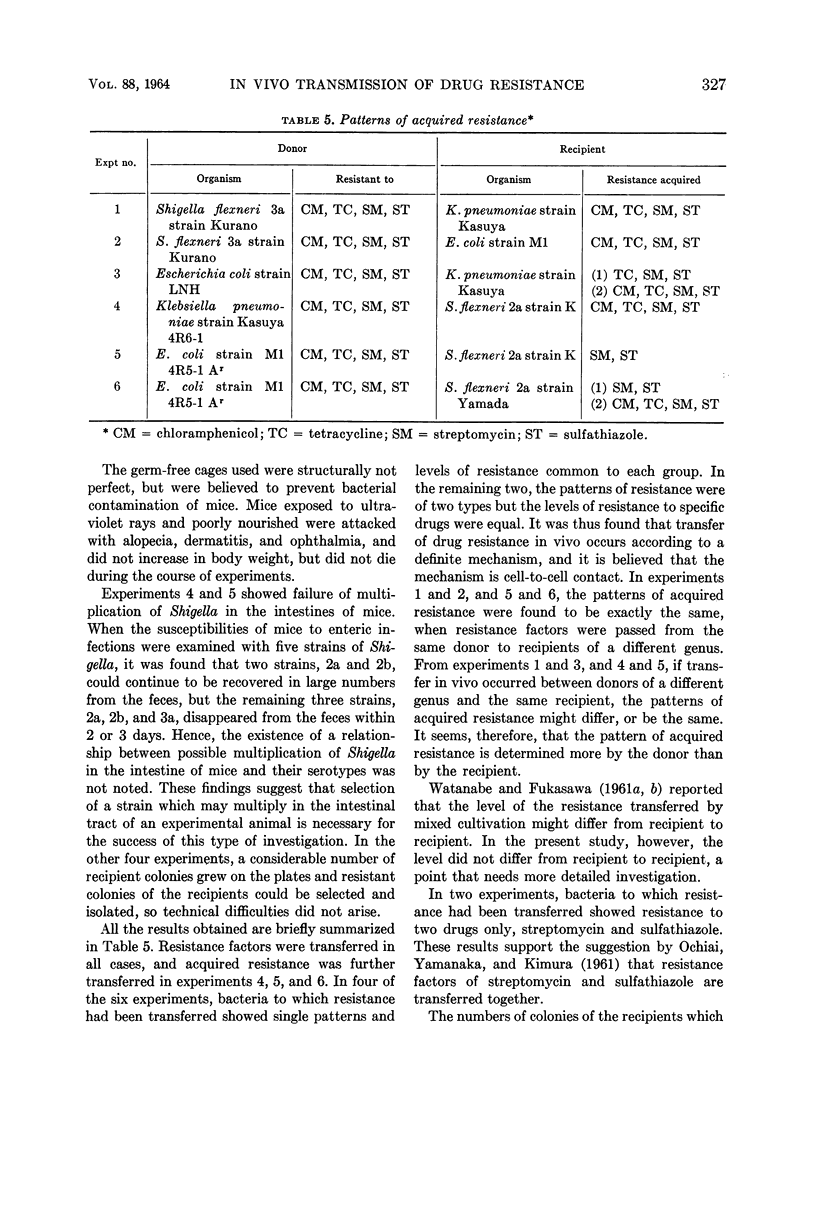
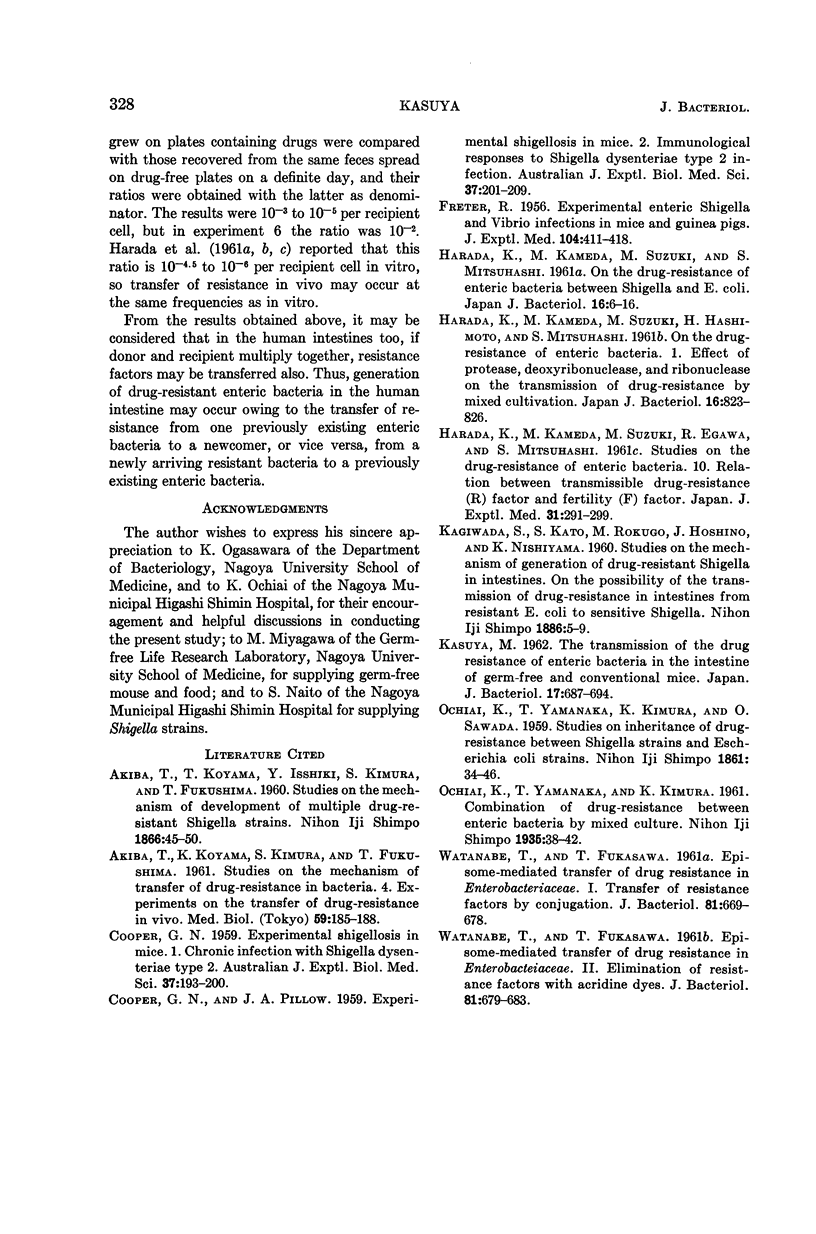
Selected References
These references are in PubMed. This may not be the complete list of references from this article.
- COOPER G. N. Experimental shigellosis in mice. I. Chronic infection with Shigella dysenteriae type 2. Aust J Exp Biol Med Sci. 1959 Jun;37:193–200. doi: 10.1038/icb.1959.21. [DOI] [PubMed] [Google Scholar]
- COOPER G. N., PILLOW J. A. Experimental shigellosis in mice. II. Immunological responses to Shigella dysenteriae type 2 infection. Aust J Exp Biol Med Sci. 1959 Jun;37:201–209. [PubMed] [Google Scholar]
- FRETER R. Experimental enteric Shigella and Vibrio infections in mice and guinea pigs. J Exp Med. 1956 Sep 1;104(3):411–418. doi: 10.1084/jem.104.3.411. [DOI] [PMC free article] [PubMed] [Google Scholar]
- HARADA K., KAMEDA M., SUZUKI M., EGAWA R., MITSUHASHI S. Studies on the drug-resistance of enteric bacteria. 10. Relation between transmissible drug-resistance (R) factor and fertility (F) factor in E. coli strain K-12. Jpn J Exp Med. 1961 Aug;31:291–299. [PubMed] [Google Scholar]
- HARADA K., KAMEDA M., SUZUKI M., MITSUHASHI S. [On the drug resistance of enteric bacteria. 5. Mechanisms of the transmission of drug resistance between Shigella and E. coli]. Nihon Saikingaku Zasshi. 1961 Jan;16:6–16. doi: 10.3412/jsb.16.6. [DOI] [PubMed] [Google Scholar]
- WATANABE T., FUKASAWA T. Episome-mediated transfer of drug resistance in Enterobacteriaceae. I. Transfer of resistance factors by conjugation. J Bacteriol. 1961 May;81:669–678. doi: 10.1128/jb.81.5.669-678.1961. [DOI] [PMC free article] [PubMed] [Google Scholar]
- WATANABE T., FUKASAWA T. Episome-mediated transfer of drug resistance in Enterobacteriaceae. II. Elimination of resistance factors with acridine dyes. J Bacteriol. 1961 May;81:679–683. doi: 10.1128/jb.81.5.679-683.1961. [DOI] [PMC free article] [PubMed] [Google Scholar]


